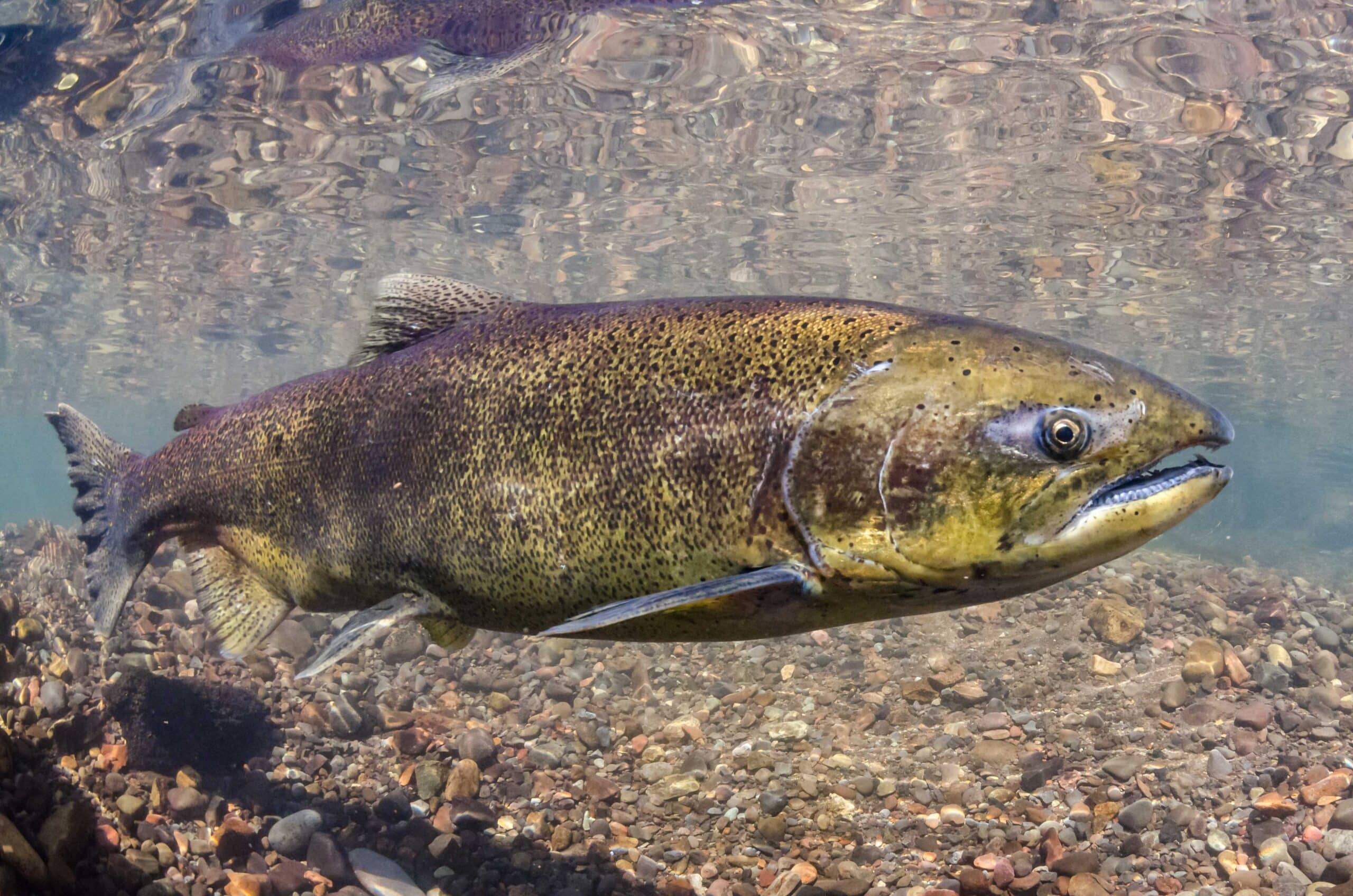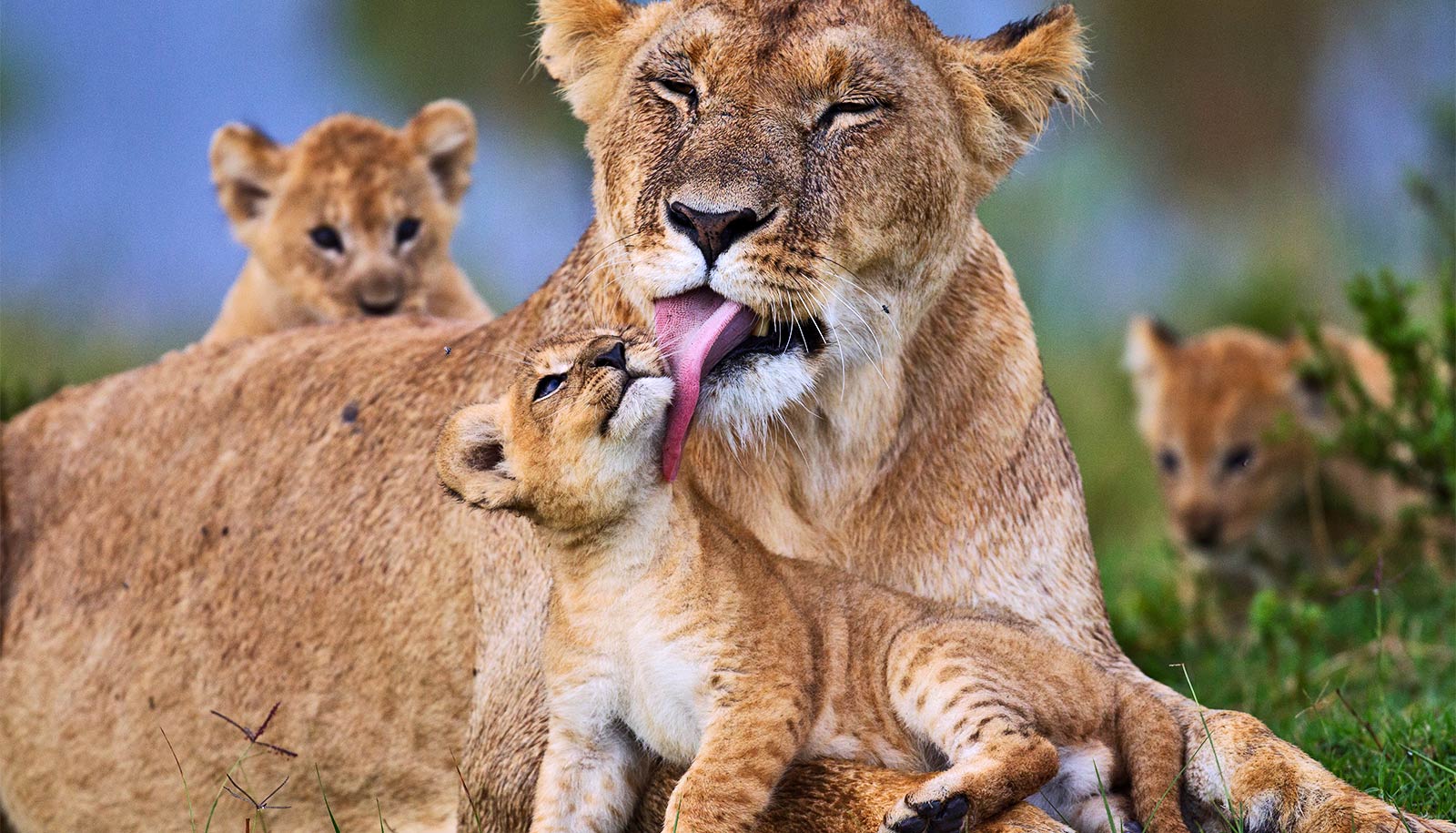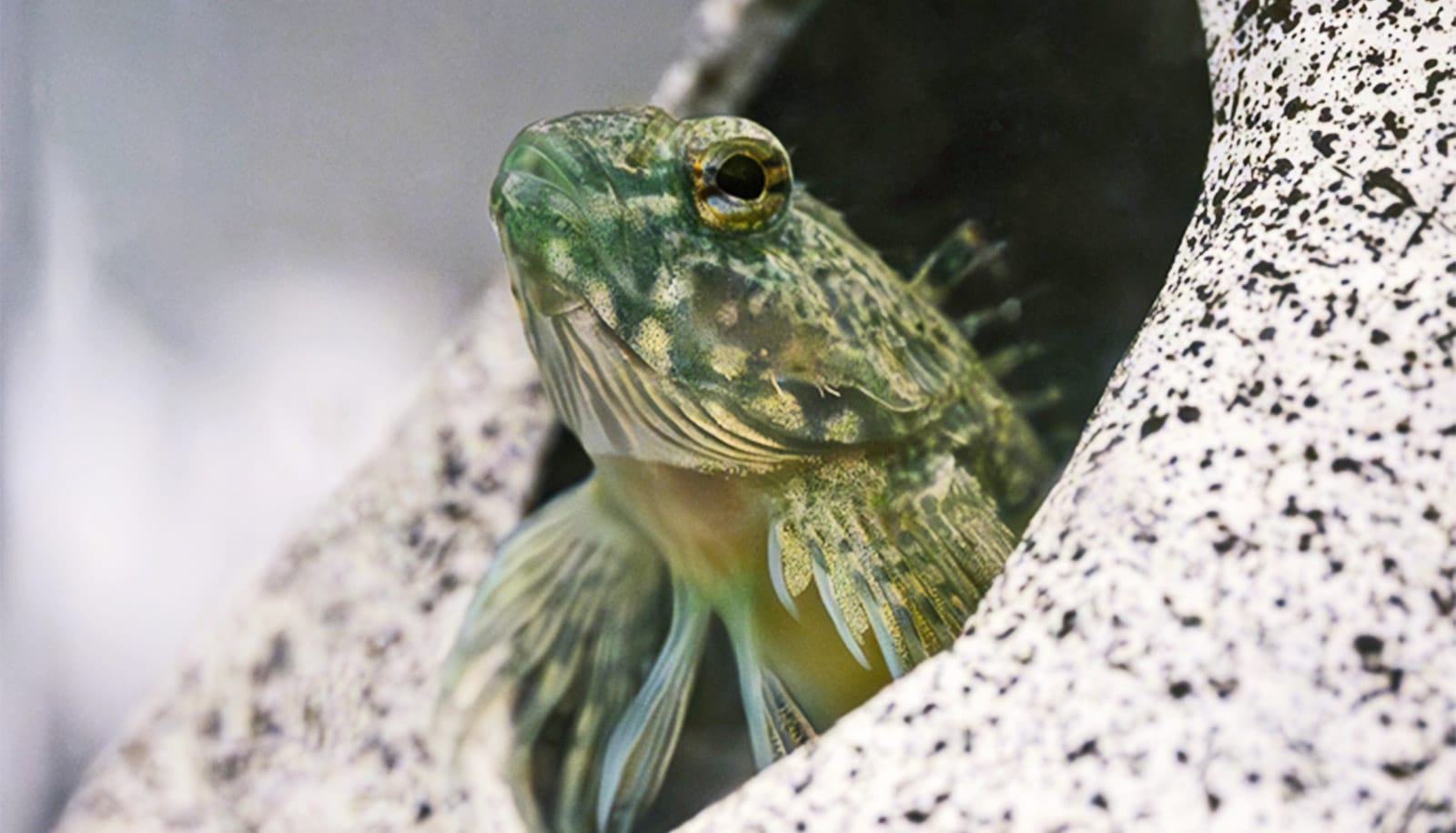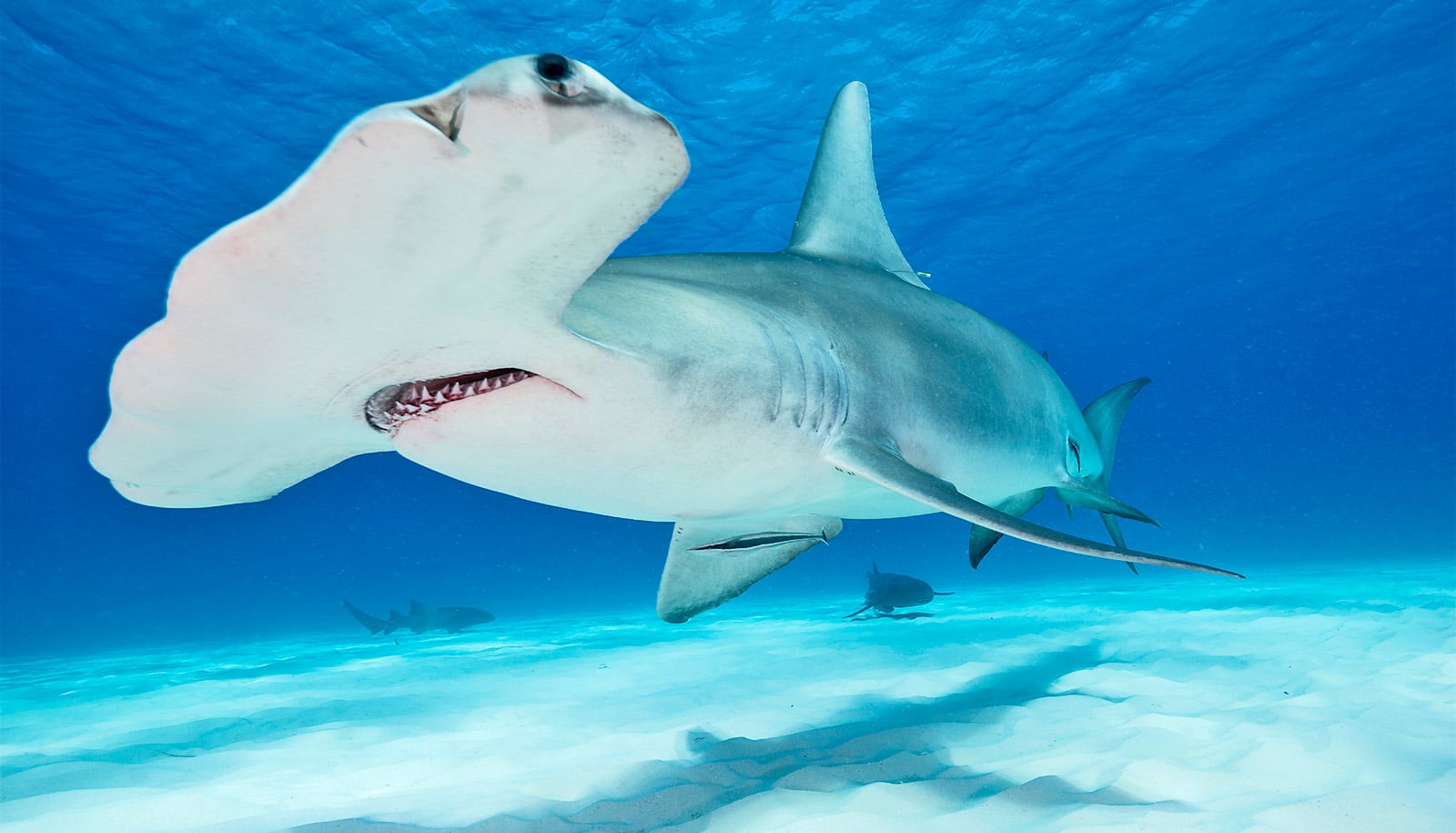The largest and oldest Chinook salmon—also known as “kings”—have mostly disappeared along the West Coast.
Chinook salmon are born in freshwater rivers and streams, then migrate to the ocean where they spend most of their lives feeding and growing to their spectacular body size. After one to five years in the ocean, the fish return to their home streams, where they spawn and then die.
A new study from hatchery and wild Chinook populations from California to Alaska took a broad look at patterns that emerged over the course of four decades and across thousands of miles of coastline.
In general, Chinook salmon populations from Alaska showed the biggest reductions in age and size, with Washington salmon a close second.
“Chinook are known for being the largest Pacific salmon and they are highly valued because they are so large,” says Jan Ohlberger, a research scientist in the University of Washington’s School of Aquatic and Fishery Sciences and lead author of the paper in Fish and Fisheries. “The largest fish are disappearing, and that affects subsistence and recreational fisheries that target these individuals.”
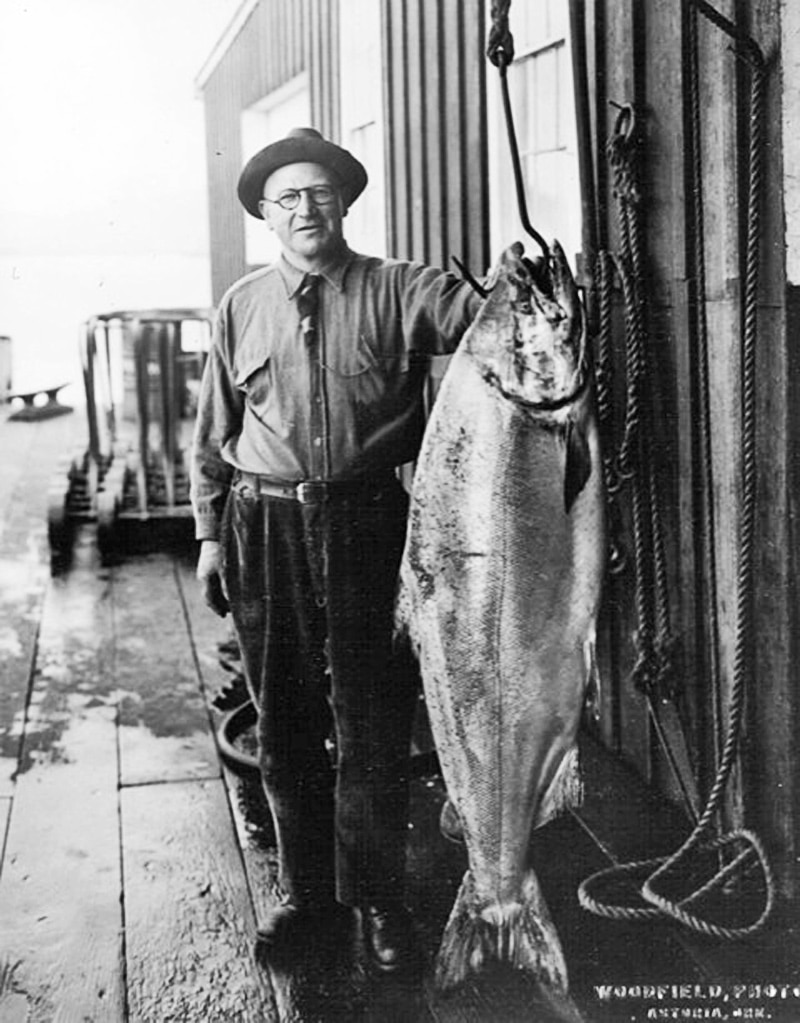
10% shorter
Each population’s lifestyle in the ocean varies, mainly depending on where they can find food. California Chinook salmon tend to stay in the marine waters off the coast, while Oregon and Washington fish often migrate thousands of miles northward along the west coast to the Gulf of Alaska where they feed. Western Alaska populations tend to travel to the Bering Sea.
“When you have predators and prey interacting in a real ecosystem, everything can’t flourish all the time.”
Despite the differences, most populations have met the same fate: a clear reduction in the average size of returning fish—up to 10 percent shorter in length, in the most extreme cases. The similarities point to a cause that transcends regional fishing practices, ecosystems, or animal behaviors, researchers say.
“This suggests that there is something about the larger ocean environment that is driving these patterns,” Ohlberger said. “I think fishing is part of the story, but it’s definitely not sufficient to explain all of the patterns we see. Many populations are exploited at lower rates than they were 20 to 30 years ago.”
It used to be common to find Chinook salmon 40 inches or more in length, particularly in the Columbia River or Alaska’s Kenai Peninsula and Copper River regions. The reductions in size could have a long-term impact on the abundance of Chinook salmon, because smaller females carry fewer eggs, so over time the number of fish that hatch and survive to adulthood may decrease.
Hungry orcas and humans
There isn’t a smoking gun, researchers say. Marine mammal predators and fishing pressure are probably two of the bigger drivers.
Commercial and sport fishing have targeted larger Chinook for years. But fishing pressure has relaxed in the last 30 years due to regulations to promote sustainable fishing rates, while the reductions in Chinook size have been most rapid over the past 15 years.
Salmon sex moves mountains (very slowly)
Resident killer whales, which are known Chinook salmon specialists, as well as other marine mammals that feed on salmon are probably contributing to the overall changes.
“We know that resident killer whales have a very strong preference for eating the largest fish, and this selectivity is far greater than fisheries ever were,” says senior author Daniel Schindler, a professor of aquatic and fishery sciences.
While southern resident killer whales that inhabit Puget Sound are in apparent decline, populations of northern resident killer whales, and those that reside in the Gulf of Alaska and along the Aleutian Islands, appear to be growing at extremely fast rates.
Six ways to save California’s trout and salmon
Scientists are still trying to understand the impacts of orcas and other marine mammals on Chinook salmon, and the ways in which their relationships may have ebbed and flowed in the past. It may not be possible, for example, for marine mammals and Chinook salmon populations to be robust at the same time, given their predator-prey relationship.
“When you have predators and prey interacting in a real ecosystem, everything can’t flourish all the time,” Schindler says. “These observations challenge our thinking about what we expect the structure and composition of our ecosystems to be.”
Coauthors are from NOAA’s Northwest Fisheries Science Center and the Alaska Department of Fish and Game. The Pacific States Marine Fisheries Commission funded the work.
Source: University of Washington
